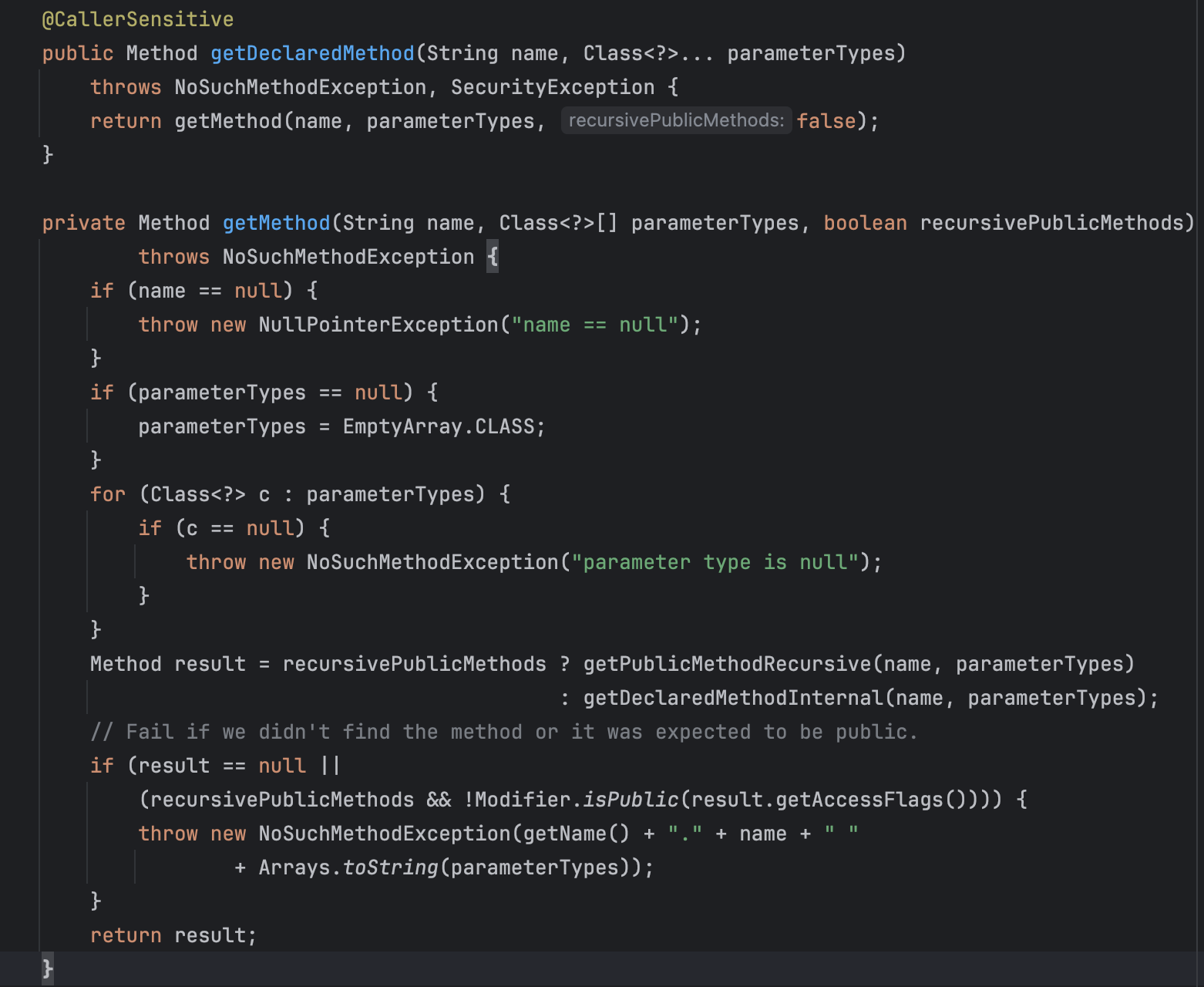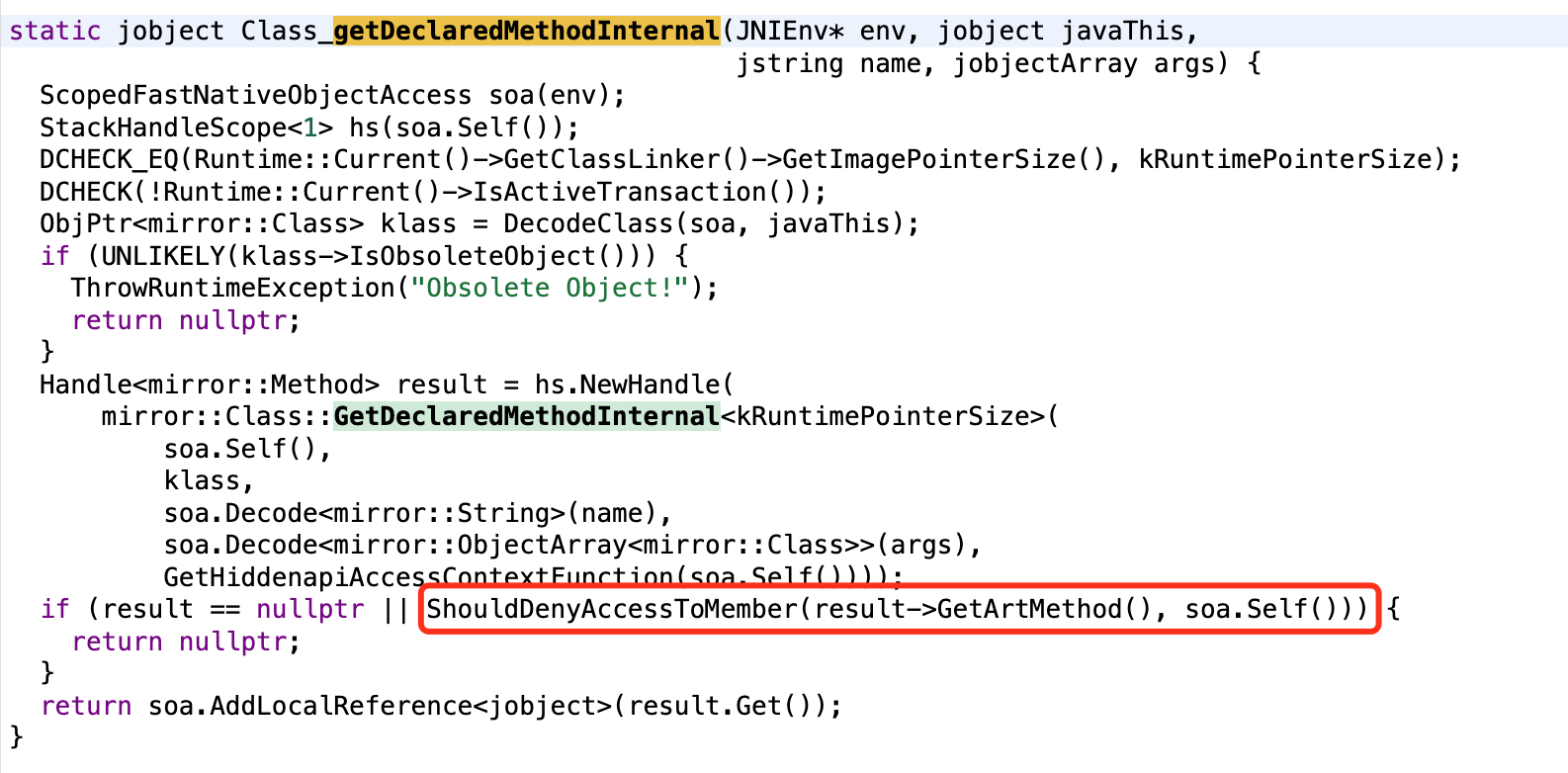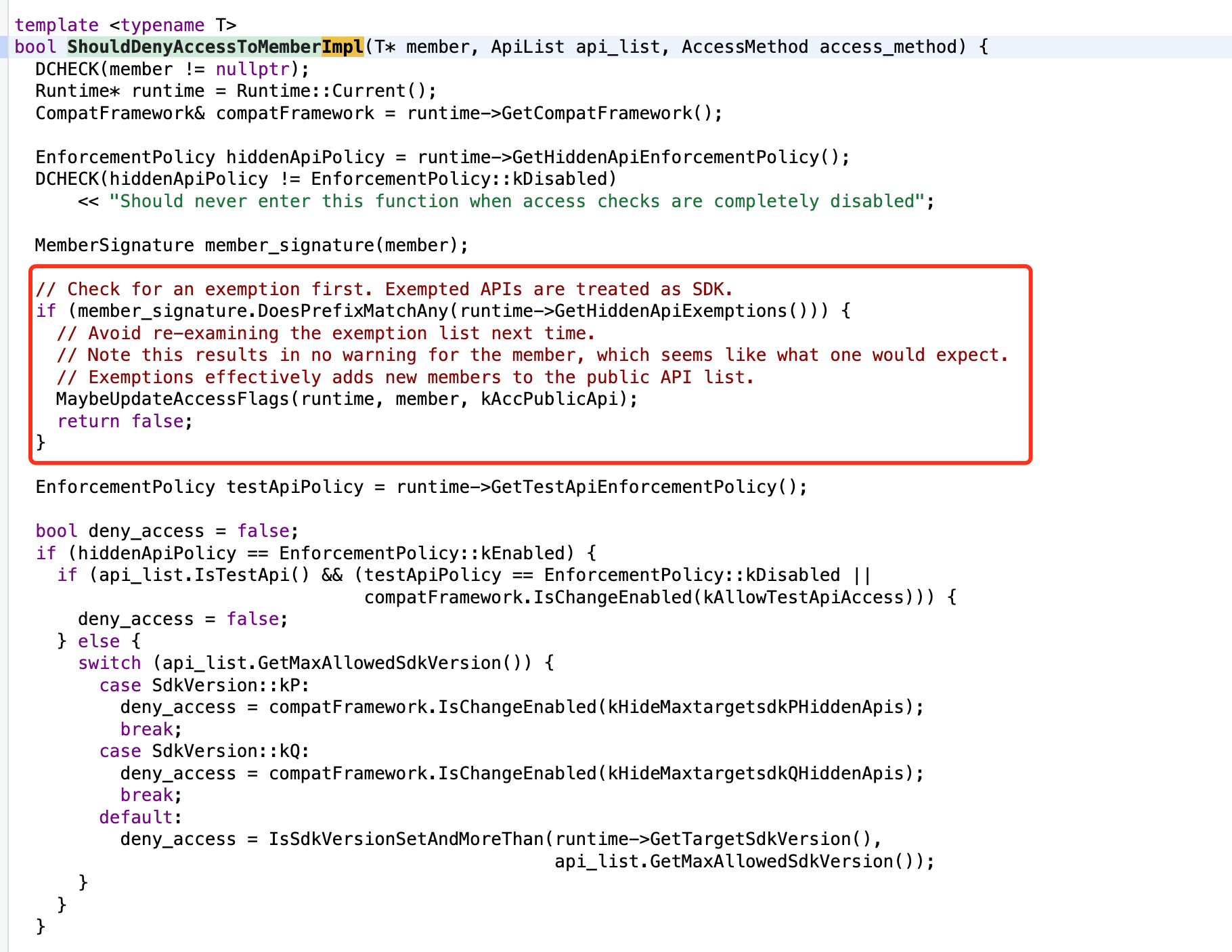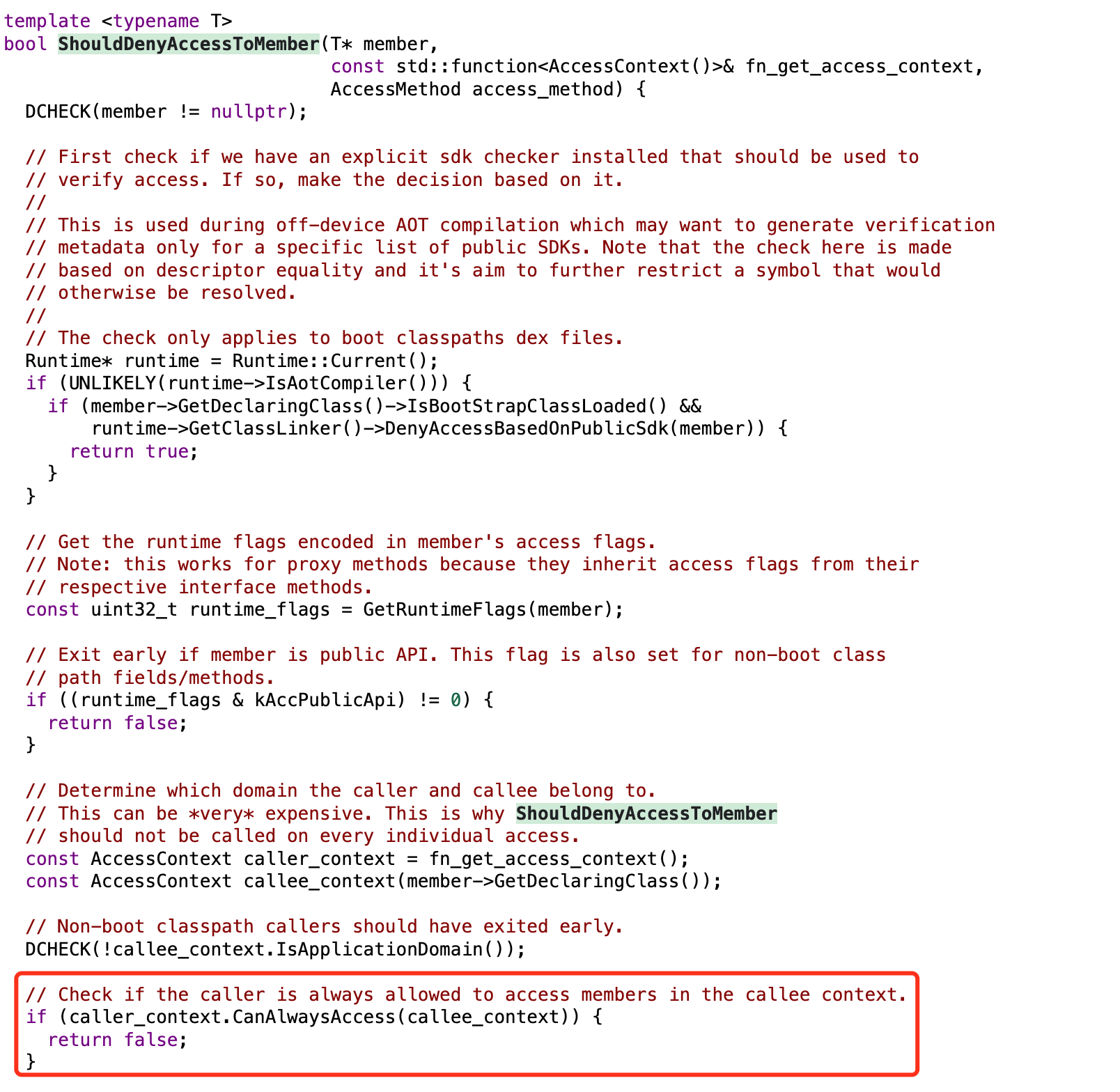注: 本文中出现的 aosp 源码版本为 android15-qpr2-release
拦截原理
首先先梳理下 android 对 hidden api 的拦截原理,我们从 getDeclaredMethod 开始分析


最后会走到 native 方法 getDeclaredMethodInternal,然后发现有一段 ShouldDenyAccessToMember 的逻辑,返回false 就会让 getDeclaredMethodInternal 返回 null,想必这就是 hidden api 隐藏逻辑了。
可以发现有一个豁免列表 runtime->GetHiddenApiExemptions,只要签名前缀匹配上任何一条豁免,就直接不拦截。

所以我们只要想办法修改 runtime 的这个字段就可以了。
unsealByDex
我们发现 setHiddenApiExemptions 这个方法其实暴露到了 java 层 VRRuntime::setHiddenApiExemptions
但它也是一个 hidden api,要调用它的话也需要先想办法绕过 hidden api 的限制。这就变成了一个鸡生蛋蛋生鸡的问题,那我们就只能想一个别的办法来绕过这个限制,我们看下 ShouldDenyAccessToMember 中的其他条件。
发现还有另外一个条件,我们看看 CanAlwaysAccess 方法内部:

其实就是比较 caller 和 callee 的谁的 domain 比较高,caller 的 domain 高于 callee 的情况下就可以直接放行。
那么我们只要想办法让 caller 处在最高的 domain kCorePlatform ,也就是让 caller 所在 class 被最上层的 BootstrapClassLoader 加载即可。
那么我们可以使用 DexFile#loadClass 加载类,这个 api 允许传入一个 null 作为 classloader,也就是用 BootstrapClassLoader 加载。
1 | private static final String DEX = /** 省略 **/ |
通过 DexFile 加载的 class 便可以调用 VRRuntime::setHiddenApiExemptions ,将其设置为 ["L"] 即可豁免全部 hidden api。
unsealNative
当然其实也不是一定要调用 VRRuntime::setHiddenApiExemptions。既然 hidden_api_exemptions_ 是 native 层结构体的字段,那自然可以在 native 层想怎么改怎么改。甚至我们也不太需要修改这个字段了,直接一劳永逸的修改 EnforcementPolicy 把 hidden api 这个功能关掉即可。
不过这个方法的坏处就是一旦系统更新结构体发生改变,就需要修改适配定位字段的逻辑。
附录
https://github.com/tiann/FreeReflection
上面两篇文章至少讲了四种绕过 hidden api block 的方法。不过本文我们主要分析 FreeReflection 项目中采用的实现。这也是美团在用的方法,截止目前最新版本(android 15)仍然有效。


